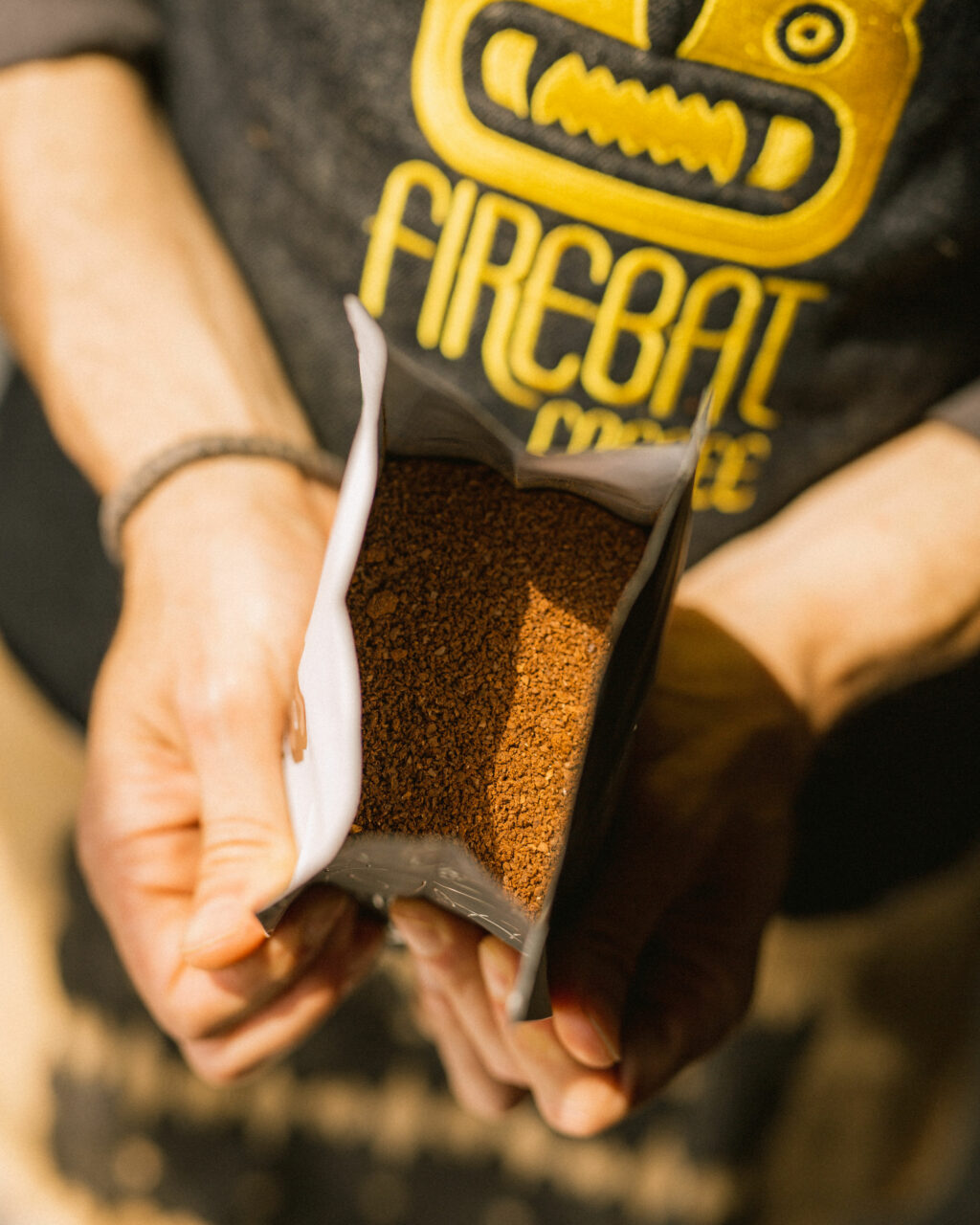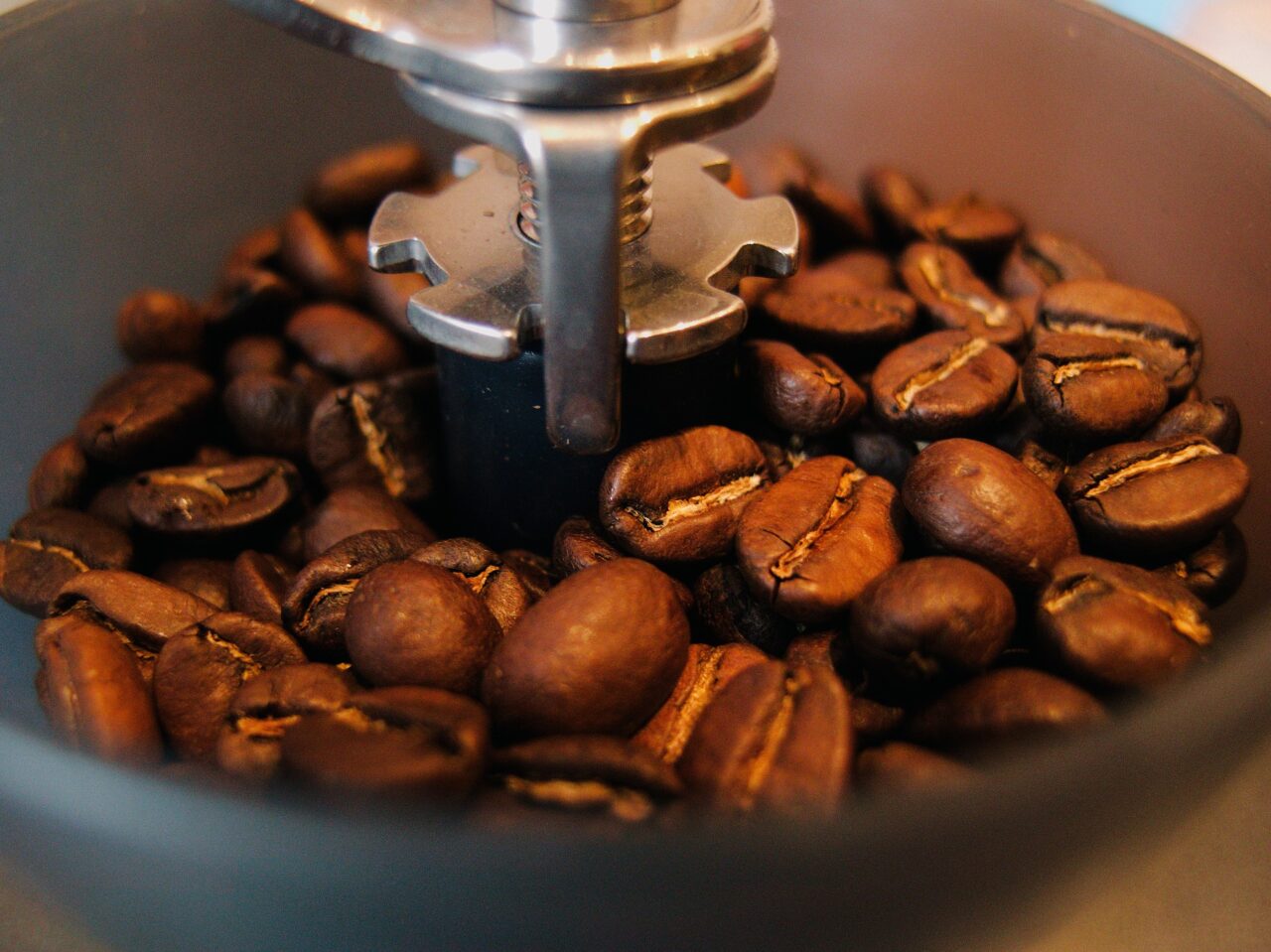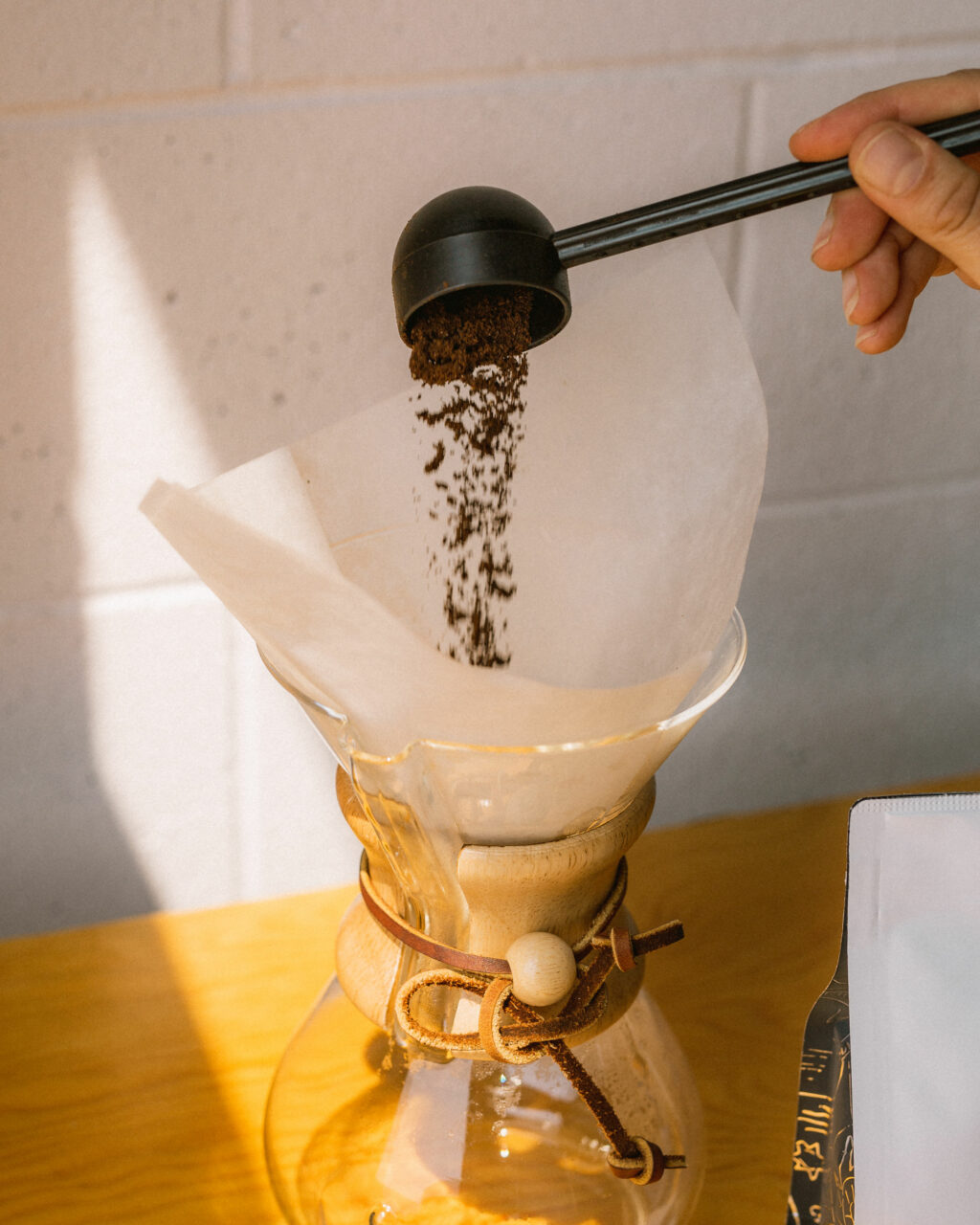Grinding coffee properly isn’t the most obvious task, especially if you’re a coffee newbie. If you’ve ever found your coffee tasted bitter, sour, or flat, there’s a good chance the culprit is the grind. Screwing up your morning coffee can leave you cranky for the rest of the day. We know that you can’t afford this, so we created the ultimate coffee grinding guide. Grinding coffee the right way isn’t hard if you know what you’re doing. Follow our top-tips, and you’ll get it right every time!
Why does coffee grind matter so much?
Understanding extraction is the key to getting the right grind and making a delicious cup of coffee. Extraction refers to the amount of caffeine and flavour pulled out of the coffee by the hot water. Your grind size will affect the speed at which the flavour and caffeine is extracted. The bigger the grind size, the slower the extraction, due to less surface area. The smaller the grind size, the faster the extraction.
For example, espresso has a very fine grind, and as a result, only needs about 30 seconds of brew time. Any longer than this, and the coffee will begin to taste bitter, burnt, and over-saturated. On the other hand, French press needs a coarse grind. Because the grinds spend more time in contact with the hot water, they will need a slower extraction.
Temperature affects extraction, too. If you’re making a hot coffee method, make sure to get your water to 93-96 degrees C. This can be achieved by letting your water rest for 30-60 seconds after it comes to a boil. When it comes to cold brew, the cold water will make for a very slow 18-24 hour extraction.

Burr Grinder vs. Blade Grinder
When it comes to grinding coffee, perhaps the most important thing to consider is your grinder. If you haven’t already, make sure you’re using a burr grinder. We don’t recommend using a blade grinder, despite their cost effectiveness and widespread availability.
Burr grinders and blade grinders work very differently. Burr grinders use adjustable burrs, either flat or conical, that act similarly to pepper mills, creating a consistent grind. Blade grinders have blades, cutting up the coffee in the same way that a blender would. This creates coffee particles of all different sizes, from fines to boulders. The result is a bitter, unpleasant taste with not many singular flavour notes. It also takes the coffee much longer to brew, because the fine particles clog the filter. Blade grinders aren’t even meant for coffee–they’re meant to grind whole spices into powder.
If you’re a serious coffee drinker, consider purchasing a burr grinder. This will allow the lovely flavour notes in your coffee to shine to their full potential. Electric countertop burr grinders are well-made power houses. If you don’t have the room for an electric burr grinder, consider a handheld manual burr grinder. They don’t take as much muscle to use as you might think, and they also travel well.
If you simply can’t afford a burr grinder at the moment, ask us to grind your coffee when you order it online. Select a grind size from the dropdown menu before you checkout. Alternatively, if you’re ordering it in-person from the shop, just ask us to grind it for you.

Know what grind to use for your method
It’s crucial to know what kind of grind you need for your specific coffee method. While it takes some trial and error to get used to your own machines, it’s good to follow a basic guideline. If you only make a certain type of coffee at home, it’s good to make a note of the number and decimal point. Remember, different coffees will grind differently, so be open to re-calibrating when you get a new origin.
Here are some common coffee methods and their corresponding grinds:
French press – coarse, the size of coarse raw sugar
Drip – finer than French press, the size of kosher salt
Pour over – finer than drip, the size of sea salt
Aeropress – finer than pour over, the size of granulated sugar

Grind right before you need it (ideally)
We recommend grinding your coffee right before you need it, if possible. Did you know that coffee begins to go stale just 20 minutes after it’s ground? Grinding your coffee creates more surface area for air to attack your coffee, and air is coffee’s number one enemy. It introduces CO2, which rapidly oxides the coffee, leading to flavour loss and staleness. Treat coffee like a food item, and avoid exposing it to air, light, and heat. If you really want those delicate flavour notes to sing, grinding right before use is essential.
If grinding your coffee all at once is unavoidable, make sure to store it in an airtight, opaque container.
How to Troubleshoot
So you’ve got the burr grinder, your beans are freshly ground, and you’ve selected the appropriate grind setting. But your coffee still tastes a little flat and uninspiring! Don’t panic. It’s important to note that small micro adjustments to your grind can make a world of difference to your coffee flavour. Here are 3 common complaints we hear from customers about home-brewing, and how to troubleshoot them.
Problem: Coffee tastes bitter and strong
Fix: Go a little coarser on your grinder. If that doesn’t work, decrease your dosage by 5 grams.
Problem: Coffee tastes sour and weak
Fix: Go a little finer on your grinder. If that doesn’t work, increase your dose by 5 grams.
Problem: Coffee tastes stale, but my beans are fresh
Fix: Clean your grinder. Grab a clean, dry cloth and wipe the grind-catcher container. Wipe the oils off of the inside of the hopper, too.
Keep an Open Mind
It can be frustrating when you’re trying to get the right grind for your coffee, but it doesn’t have to be. Try to keep an open mind, and treat it like a science experiment. After a while, it will become second nature, and you’ll actually enjoy the process!
Want to put your new skills to the test? Try our pour-over recipe using a Chemex for a clean, flavourful cup of coffee!
